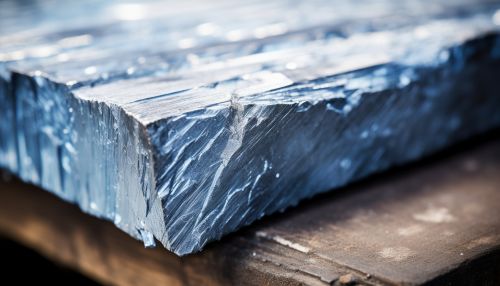Lead
Introduction
Lead (Pb) is a chemical element with atomic number 82. It is a heavy metal that is denser than most common materials. Lead is soft and malleable, and also has a relatively low melting point. When freshly cut, lead is silvery with a hint of blue; it tarnishes to a dull gray color when exposed to air.


Properties and Characteristics
Lead is a relatively unreactive post-transition metal. Its weak metallic character is illustrated by its amphoteric nature; lead and lead oxides react with acids and bases, and it tends to form covalent bonds. Compounds of lead are usually found in the +2 oxidation state rather than the +4 state common with lighter members of the carbon group. Exceptions are mostly limited to organolead compounds.
Occurrence and Production
Lead is usually found in ore with zinc, silver and (most abundantly) copper, and is extracted together with these metals. The main lead mineral is galena (PbS), which contains 86.6% lead. Other common varieties are cerussite (PbCO3) and anglesite (PbSO4).
Applications
Lead has been used by humans for a variety of purposes for more than 5,000 years. Because of its high density and low cost, it is used in a variety of applications, including batteries, pewter, solder, and shields against radiation.
Health Effects
Exposure to lead can have serious health effects. It can cause neurological damage, especially in children, leading to learning disabilities and behavioral problems. It can also cause anemia, hypertension, renal impairment, immunotoxicity and toxicity to the reproductive organs.
Environmental Impact
Lead can have serious environmental impacts. It can contaminate soil and water, and it can accumulate in the bodies of animals and humans. It is also a potent neurotoxin that can cause serious health problems in humans and wildlife.
